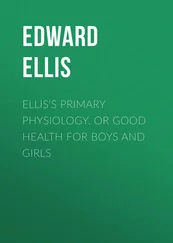The medulla oblongata is a relay station for sensory nerves going to the cerebrum. The medulla contains autonomic centres such as the cardiac centre, respiratory centre, vasomotor centre and coughing, sneezing and vomiting centres. The medulla is also the site of decussation of the pyramidal tract; this means that the right side of the body is controlled by the left cerebral hemisphere and vice versa.
The second largest structure of the brain ( Figure 11.2), partially hidden by the cerebral hemispheres, is the cerebellum. The cerebellum is responsible for the co‐ordination of voluntary muscle movement, motor learning, cognitive functions and balance and posture. It ensures that muscle movements are smooth, co‐ordinated and precise. Motor commands are not initiated in the cerebellum; the cerebellum modifies the motor commands of the descending pathways to ensure that movements are more adaptive and accurate. Even though the cerebellum accounts for approximately 10% of the brain’s volume, it contains over 50% of the total number of neurons in the brain.
The limbic system is a complex set of brain structures located on both sides of the thalamus, under the cerebrum. The limbic system includes the hippocampus, amygdala, anterior thalamic nuclei, septum, habenula, limbic cortex and fornix. It supports a variety of functions, including emotion, behaviour, motivation, long‐term memory and olfaction. The limbic system acts on the endocrine and autonomic nervous systems ( Figure 11.3).
These are a series of interconnected, fluid‐filled cavities that lie within the brain, a communicating network filled with cerebrospinal fluid (CSF) and located within the brain parenchyma. The ventricular system is composed of two lateral ventricles, the third ventricle, the cerebral aqueduct, and the fourth ventricle. The choroid plexuses located in the ventricles produce CSF, filling the ventricles and subarachnoid space, following a cycle of constant production and reabsorption.
Cerebrospinal fluid is a clear body fluid occupying the subarachnoid space and the brain ventricular system around and inside the brain and spinal cord. It acts as a cushion or buffer for the cortex, providing basic mechanical and immunological protection to the brain inside the skull. It is produced by modified ependymal cells of the choroid plexus found in all components of the ventricular system except for the cerebral aqueduct and the posterior and anterior horns of the lateral ventricles. CSF flows from the lateral ventricle to the third ventricle through the interventricular foramen (also called the foramen of Monro). The third ventricle and fourth ventricle are connected to each other by the cerebral aqueduct (also called the aqueduct of Sylvius). CSF then flows into the subarachnoid space through the foramina of Luschka (there are two of these) and the foramen of Magendie (only one of these).
There is approximately 150 mL of CSF circulating around the brain, in the ventricles and around the spinal cord. The CSF is replaced every 8 hours. Absorption of the CSF into the bloodstream takes place in the superior sagittal sinus through structures called arachnoid villi. When the CSF pressure is greater than the venous pressure, CSF will flow into the bloodstream. However, the arachnoid villi act as ‘one‐way valves’: if the CSF pressure is less than the venous pressure, the arachnoid villi will not let blood pass into the ventricular system.
Due to the brain’s many important roles, damage to any of its lobes from injuries, illnesses or chronic conditions such as brain tumour can cause major losses in brain function. A space‐occupying lesion of the brain is usually due to malignancy but it can be caused by other pathologies such as an abscess or haematoma. The effect of a tumour may be local, due to focal brain damage, and the presentation can provide an indication of the location of the lesion but not its cause. There may be more general symptoms related to raised intracranial pressure or seizures, behavioural changes or false localising signs. While large lesions in some regions, for example the frontal lobe, may be relatively silent, a small lesion in the dominant hemisphere may impact severely on speech, for example.
Конец ознакомительного фрагмента.
Текст предоставлен ООО «ЛитРес».
Прочитайте эту книгу целиком, купив полную легальную версию на ЛитРес.
Безопасно оплатить книгу можно банковской картой Visa, MasterCard, Maestro, со счета мобильного телефона, с платежного терминала, в салоне МТС или Связной, через PayPal, WebMoney, Яндекс.Деньги, QIWI Кошелек, бонусными картами или другим удобным Вам способом.












